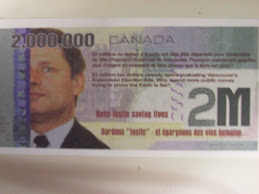The drug problem: Europe tolerance vs. U.S. criminalization
RICK STEVES
918 words
16 October 2007
Guelph Mercury
Final
A9
English
Copyright (c) 2007 Guelph Mercury.
Europe has a drug problem, and knows it. But the Europeans' approach to it is quite different from the American "war on drugs." I spend 120 days a year in Europe as a travel writer, so I decided to see for myself how it's working. I talked with locals, researched European drug policies and even visited a smoky marijuana "coffee shop" in Amsterdam. I got a close look at the alternative to a war on drugs.
Europeans are well aware of the U.S. track record against illegal drug use. Since U.S. president Richard Nixon first declared the war on drugs in 1971, the United States has locked up millions of its citizens and spent hundreds of billions of dollars (many claim that if incarceration costs are figured in, a trillion dollars) waging this "war." Despite these efforts, U.S. government figures show the overall rate of illicit drug use has remained about the same.
By contrast, according to the 2007 UN World Drug Report, the percentage of Europeans who use illicit drugs is about half that of Americans. ( Europe also has fewer than half as many deaths from overdoses. ) How have they managed that -- in Europe, no less, which shocks some American sensibilities with its underage drinking, marijuana tolerance and heroin-friendly "needle parks"?
Recently, in Zurich, Switzerland, I walked into a public toilet that had only blue lights. Why? So junkies can't find their veins.
A short walk away, I saw a heroin maintenance clinic that gives junkies counselling, clean needles and a safe alternative to shooting up in the streets. Need a syringe? Cigarette machines have been retooled to sell clean, government-subsidized syringes.
While each European nation has its own drug laws and policies, they seem to share a pragmatic approach. They treat drug abuse not as a crime but as an illness . And they measure the effectiveness of their drug policy not in arrests but in harm reduction .
Generally, Europeans employ a three-pronged strategy of police, educators and doctors. Police zero in on dealers -- not users -- to limit the supply of drugs. Users often get off with a warning and are directed to get treatment. Anti-drug education programs warn people (especially young people) of the dangers of drugs, but they get beyond the "zero tolerance" and "three strikes" rhetoric that may sound good to voters but rings hollow with addicts and at-risk teens. And finally, the medical community steps in to battle health problems associated with drug use (especially HIV and hepatitis C) and help addicts get back their lives.
Contrast this approach with the American war on drugs. As during Prohibition in the 1930s, the United States spends its resources on police and prisons to lock up dealers and users alike. American drug education (such as the now-discredited DARE program) seemed like propaganda, and therefore its messengers lost credibility.
Perhaps the biggest difference between European and American drug policy is how each deals with marijuana. When I visited the Amsterdam coffee shop that openly sells pot, I sat and observed: People we re chatting; a female customer perused a fanciful array of "loaner" bongs. An older couple (who apparently didn't enjoy the edgy ambience) parked their bikes and dropped in for a baggie to go. An underage customer was shooed away. A policeman stepped inside, but only to post a warning about the latest danger from chemical drugs on the streets. In the Netherlands, it's cheaper to get high than drunk, and drug-related crimes are rare.
After 10 years of allowed recreational marijuana use, Dutch anti-drug abuse professionals agree that there has been no significant increase in pot smoking among young people and that overall cannabis use has increased only slightly. Meanwhile, in the United States, it's easier for a 15-year-old to buy marijuana than tobacco or alcohol -- because no one gets carded when buying something on the street.
The Netherlands' policies are the most liberal, but across Europe no one is locked away for discreetly smoking a joint. The priority is on reducing abuse of such hard drugs as heroin and cocaine. The only reference to marijuana I found among the pages of the European Union's drug policy was a reference to counselling for "problem cannabis use."
Meanwhile, according to FBI statistics, in recent years about 40 per cent of the roughly 80,000 annual drug arrests were for marijuana -- the majority (80 per cent) for possession.
In short, Europe is making sure that the cure isn't more costly than the problem.
While the United States spends tax dollars on police, courts and prisons, Europe spends its taxes on doctors, counselors and clinics. EU policymakers estimate that they save 15 euros in police and health costs for each euro invested in drug education and counselling.
European leaders understand that a society has a choice: tolerate alternative lifestyles or build more prisons. They've made their choice.
Rick Steves (ricksteves.com) writes European travel guidebooks and hosts travel shows on public television and radio. This commentary originally appeared in the Los Angeles Times.
Wednesday, October 17, 2007
The drug problem: Europe tolerance vs. U.S. criminalization
Posted by
Jen
at
11:45 AM
![]()
![]()
Subscribe to:
Post Comments (Atom)




1 comment:
interesting! nice article.
Post a Comment